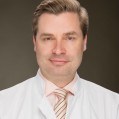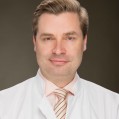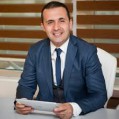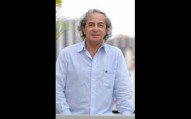Day 1 :
Keynote Forum
Clemens Esche
Beautiful Skin Institute PLLC, USA
Keynote: Vein illumination for facial neuromodulators and fillers helps minimizing post-procedure bruising
Time : 09:30- 10:35

Biography:
Abstract:
Keynote Forum
Helena Rosengren
Skin Cancer College, Australasia
Keynote: Effect of a single prophylactic pre-operative oral antibiotic dose on surgical site infection following complex dermatologic procedures on the nose and ear: a prospective, randomized, controlled, doubleblinded trial
Time : 10:15-11:00

Biography:
Abstract:
Keynote Forum
Bill Kortesis
H K Plastic Surgery, USA
Keynote: The hybrid approach in modern gluteoplasty and a proposed decision-making algorithm

Biography:
Bill Kortesis, MD, FACS, a Co-owner and Partner at H K Plastic Surgery received his Doctor of Medicine degree from Wake Forest University School of Medicine in Winston-Salem, from which he graduated as a topper. He completed his Residency at Wake Forest University Baptist Medical Center in the Department of Plastic and Reconstructive Surgery and is a member of the Phi Beta Kappa Society. He has extensive teaching experience and has received teaching awards for his efforts in furthering medical student education. He is a Board-certified Plastic Surgeon specializing in both Reconstructive and Cosmetic Surgery. With significant contributions to the field of Plastic Surgery, he has established himself as a talented and caring Surgeon with a genuine desire to help others within the medical community and beyond
Abstract:
The gluteal region is an important aesthetic symbol of the body and represents a major component of sexual attraction. Buttocks descent and atrophy are common presenting complaints for patients seeking elective improvement of their body. Gluteal surgery has a recent history of technique evolution, with various reported methods and refinements, including autologous tissue and alloplastic materials. It has been gaining popularity, and an exponential growth in buttocks procedures has been recorded in the recent years. Modern comprehensive gluteal rejuvenation must address both gluteal atrophy and ptosis. Gluteal implants can give a rounded and enhanced appearance to the buttocks while lifting in the form of excisional techniques can address the ptosis. These techniques may be applied together in one surgical procedure or performed in a staged sequence. This report describes the combination of lifting and enhancement techniques to achieve improvement in the gluteal region. An algorithm, to assist with decision making, based on the gluteal deformity encountered, is also proposed. Two separate clinical examples are described, a patient with gluteal implants with synchronous buttocks lift and a patient with pursestring gluteoplasty followed by gluteal implants at a later time. The presented algorithm will enhance the participants’ decision making process when encountering gluteal deformities. The audience will learn new and innovative approaches to gluteal augmentation through autologous and alloplastic techniques. With improved decision making ability, the audience will be positioned to offer cutting edge gluteal surgery in a safe and effective manner.
Keynote Forum
Gaurav Bharti
H K Plastic Surgery, USA
Keynote: Tissue liquefaction liposuction gluteal augmentation: A new technique for sculpting, harvesting and transferring fat

Biography:
Gaurav Bharti, MD, FACS, Board Certified Plastic Surgeon, Co-owner and Partner at H K Plastic Surgery believe that plastic surgery requires a balance of compassion, understanding, and technical skills. He performs a full range of cosmetic procedures under general and local anesthesia, including breast augmentation, mommy makeovers, breast revision surgery, body contouring, facial surgery, and vaginal rejuvenation surgery. He graduated from Medical School at Quillen College of Medicine at East Tennessee State University. Following completion of medical school, he and his family moved to Winston-Salem, NC, where he completed his Plastic Surgery Residency at Wake Forest University School of Medicine. After residency, he held a position as Associate Professor at Quillen College of Medicine, Department of Surgery where he had a busy Aesthetic & Reconstructive practice. During that time, he mentored numerous medical students and surgical residents at Quillen College of Medicine, ETSU
Abstract:
Large volume fat transfer for gluteal augmentation can be associated with long operative times and surgeon fatigue. Numerous modifications have been introduced to obtain fat in a more efficient method while improving fat graft take. A novel method for fat harvest involves Tissue Liquefaction Liposuction (Hydrasolve®). This technique allows for fat transfer that is removed with an atraumatic technique. Using this vehicle, we aim to show that large volumes of fat can be harvested and transferred safely, reliably, and with consistent results. Autologous gluteal augmentation with fat transfer is a commonly performed procedure. Hydrasolve® liposuction is a novel technique for fat harvesting that utilizes liquefaction of the fatty tissue. This results in minimal trauma both to the fat cells and surrounding tissues. Large volumes of fat may be harvested and transferred safely. We have seen excellent results with high rates of patient satisfaction, stable graft take, and minimal complications. This presents a novel technique for fat harvesting that utilizes tissue liquefaction. This technique allows the surgeon to rapidly remove fat while producing a bloodless, uniform layer of fat for grafting in a closed system. This technique for fat grafting improves the process for the surgeon and the outcome for the patient
- Dermatological Procedures | Aesthetic Surgery: Surgical & Non-Surgical Procedures | Skin Pigment Disorders | Hair Care | Cosmetics and Drugs | Hair Care| Shaping: Face and Body and their Challenges | Aesthetic Surgical Procedures
Location: sunset 2

Chair
Clemens Esche
Beautiful Skin Institute PLLC, USA

Co-Chair
Helena Rosengren
Skin Cancer College, Australasia
Session Introduction
Laurence Benouaiche
Plastic, Reconstructive Surgery and Aesthetics Clinic, France
Title: New methods of face and neck rejuvenation with minimal invasive thread lifting methods - Aptos

Biography:
Abstract:
The last decades have seen new priorities in treatment of a flabby, ageing face towards minimally invasive aesthetic surgery, to be accompanied and followed by the requirements to perform such interventions with the maximally reduced health hazards, with inconsiderable injury, without cuts and, respectively, to be followed by no resulting scars, as well as a short postoperative period. Many methods complying with these requirements have been proposed. One of them is the so-called APTOS method, which has received wide recognition amongst surgeons and dermatologists in more than 50 countries. These various methods can be associated to improve face réjunévation simultaneously or according to a planed strategy. We propose a new reviewing presentation, including new absorbable APTOS threads: Light Lift, Excellence and Nano. After having explained the technology of the threads, we will discuss the good patient indication, the criteria which determine the choice of the threads and methods for each type of patient. There are many techniques and we will present them with videos. Then, we will discuss the results, unsatisfactory outcomes obtained and complications encountered, as well as how to improve the cosmetic outcomes to be obtained. To conclude, we will propose a strategy for the long-term treatment of the neck and the face, preventing surgical management of the ageing process. The report is based on our experience gained in applying the Aptos barbed threads devised by the authors and using the respective methods for treatment of more than 100,000 patients suffering from facial soft-tissue ptosis, manifested wrinkles and folds. Along with it, we discuss a new method of facial thread lifting the so-called APTOS Light Lift, Excellence, and Nano.
Takashiro Akitsu
Tokyo University of Science, Japan
Title: Application for UVA sunscreen: Light absorption of Schiff base metal complexes with TiO2

Biography:
Takashiro Akitsu is a Full Professor in Department of Chemistry, Faculty of Science Division II at Tokyo University of Science. He completed his undergraduate school training (chemistry) from Osaka University, Japan and his graduate school training (physical & inorganic chemistry, especially coordination, crystal and bioinorganic chemistry) from Osaka University, Japan. He has published up to about 150 articles in peer-reviewed journals and has had posters presented at international level. He has been a peer reviewer of many journals
Abstract:
Gerhard J Mohr
Joanneum Research, Austria
Title: Smart indicator textiles and nonwovens for detection of pH on skin and in wounds

Biography:
Abstract:
Laurie Ke
University of Massachusetts, USA
Title: Aesthetic Correction Techniques for Vitiligo, Alopecia and Other Hair Loss Related to Follicular Damage, Hypothyroidism and Trichotillomania
Biography:
Laurie graduated from The University of Massachusetts as a member of the High Honour Nursing Society and is on the Nursing Advisory Board for Berkshire Community College. She has over 3 decades of experience in aesthetics and a background in fine art. She’s received awards for her clinical excellence, as well as 3 U.S. and international awards for her technique in creating the appearance of realistic micro pigmented and micro bladed eyebrows. She owns Advanced Image Artistry, in the Berkshires, MA, and has satellite clinics in Los Angeles and Sarasota, where she specializes in alopecia, scar revision, paramedical and aesthetic procedures, along with her facial feature feminization/de-feminization through the gender reassignment process
Abstract:
Huseyin Kandulu
Bilecik State Hospital, Turkey
Title: Abdominal liposculpture (abdominal etching) for male patient with ultrasound energy (vaser)

Biography:
Abstract:
Biography:
Abstract:
Angelo Rebelo
Clinica Milenio, Portugal
Title: Mastopexy with breast implants areola-vertical technique under local anesthesia

Biography:
Angelo Rebelo began his educational experience at the Faculty of Medicine of the University of Lisbon where he was graduated in Medicine in 1980, he received his specialty training in Plastic, Reconstructive and Aesthetic Surgery at the São José and Santa Maria Hospitals and he completed in 1990. He is registered in the South Regional Section of the Portuguese Medical Association and possesses the title of Specialist in Plastic, Reconstructive and Aesthetic Surgery, and holds the Professional Certificate Number Twenty-Three Thousand and Five. He has been in private exclusive practice for more than 25 years; in the last 20 years, he’s in exclusivity at Clinica Milénio in Lisbon, as Clinic Director and Aesthetic Surgeon. He has been invited to made consultations and aesthetic surgeries in several countries such as: Germany, Spain, Belgium, Netherlands, South Korea, Chine, etc
Abstract:
There are several techniques to perform breast lift and all have the same basic principles: Preserve anatomy and physiology of the breast, avoid nipple necrosis, maintain sensibility of the nipple, do not interfere with lactation or the ability to breast-feed, have a good shape and size, smaller scars and good final appearance. The author describes a technique with only an areola-vertical final scar with indications in almost all types of ptotic breasts and all grades of ptosis. It’s a versatile technique with no conventional measurements or draws. He makes the pre-op marking in the right breast, and one of the key point being the final position of the nipple and the other where finishing the vertical at the inframammary fold. All the other draw/markings are made by the handling of the breast. After marking the right breast by hand, measurements are taken and the other breast is marked to achieve a good symmetry. He performs all the cases under local tumescent anesthesia with oral and IV sedation. One of the advantages of this technique is less risk of hypertrophic or colloid scaring with few limitations in dressing any type of clothes. This technique doesn’t interfere with normal breast anatomy and physiology and it’s less traumatic, less oedema, less painful and no bleeding. Patients make a quicker recovery and can do many things in few days. Tumescent local anesthesia – about 200 cc of the modified Klein’s formula are infiltrated in both breasts. Local anesthesia is performed in the line incision, surgical technique/ procedure - De-epithelization of the area from the upper part of the areola to the lower part of the areola (Schwarmann’s maneuver). Creating the pocket for the implant undermining under the gland and above the aponeurosis of the pectoralis major. Placement of cohesive gel silicone implant, round shape, low, medium or high profile according to the type of the breast (Eurosilicone). Closure is made in layers to avoid tension in the final wound. No drain is used routinely and all patients have a complete clinical history, pre-op routine examinations plus mammography and/or mammary echography
Roberto Avanzato
L’Albereta Relais & Chateaux Espace Chenot Health Wellness & Spa , Italy
Title: A revolutionary mini-invasive treatment for cellulite blemishes: One year of experience
Time : 16:55-17:20

Biography:
Roberto Dell' Avanzato MD is the Past Medical Director of L’Albereta Relais & Chateaux Espace Chenot Health Wellness & Spa, Italy. He is a Specialist in Surgery,
Expert in Aesthetic Medicine and Cosmetic Surgery. He pursued his Master Degree in Aesthetic Surgery and he is an Honorary Member of the Israel Academy of
Beauty.
Abstract:
Introduction: Tissue release for cellulite has been practiced for decades with limited success. In October 2016 we started our experience with a novel procedure that represent the only FDA-cleared minimally invasive treatment clinically proven to improve the cellulite blemishes for nearly four years in only one session.
Materials & Methods: I report my one year of personal experience. The procedure is performed in a practice by a qualified physician and the treatment takes maximum 45 minutes. Cellulite dimples are marked and the device is applied to stretch and stabilize tissue in a vacuum chamber, while local anesthesia is delivered. Then, a precise minimally-invasive subcutaneous release of the connective bands (TS-GS: stabilized-guided subcision) is performed with a microblade, without cuts or incisions. After treatment, a light
compression is applied and patients can go about immediately to their daily life.
Results: The procedure treats the primary structural cause of cellulite blemishes, represented by the connective bands crossing throughout fat in thighs and buttocks. The most common side effects reported by patients were soreness and bruising.
Conclusions: This revolutionary FDA-cleared procedure for the cellulite puckering, combines a proven approach with an innovative technology to treat the primary structural cause of cellulite blemishes.
Amit Patel
University of Kentucky, USA
Title: Anatomical considerations for facial fillers
Time : 17:20-17:45

Biography:
Abstract:
Shereen Adel
Fayoum University, EGYPT
Title: Platelet Rich-Plasma (PRP) in treatment of melasma
Time : 17:45-18:10
Biography:
Abstract:
Kanwar Aryamman Singh
MIMER Medical College, India
Title: Acne scar management: A prospective approach combining PRP and fractional CO2
Biography:
Abstract:
Acne is very common in skin outpatient department and scars are seen in almost 95% of cases. As acne scars are causing significant impact on psychosocial wellbeing of an individual and hampering day to day routine activities and creating low self-esteem. Though, there are numerous modalities of treatment (like chemical peels, dermabrasion, derma-roller etc.) but researchers are still trying for a single modality to treat the complications due to its variety in shape and depth and reduce the duration of treatment. As autologous PRP has already shown tremendous potential in field of dermatology in enhancing wound healing and fractional CO2 is being considered to have good approach for acne scarring. So, planned of combining the two to enhance the treatment modality in acne scars and decrease the duration and its psychosocial impact. The main objective of this study was to assess the efficacy of a combined modality in terms of clinical improvement and reduced treatment duration
